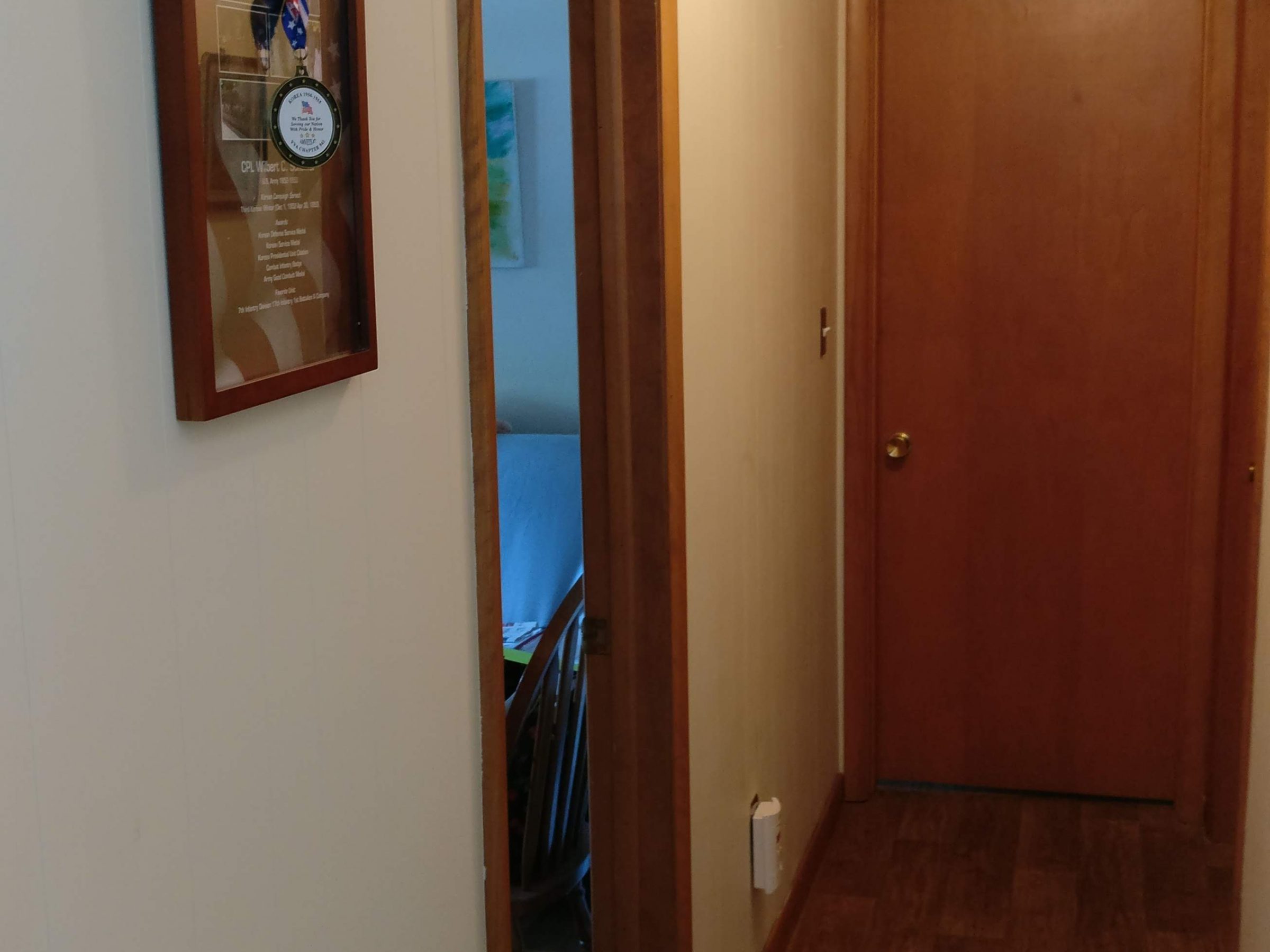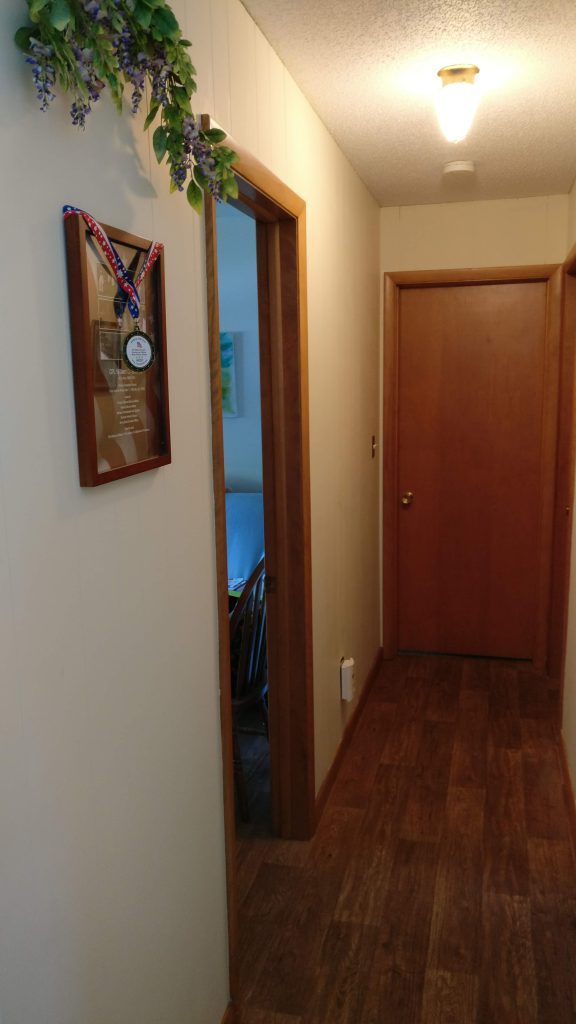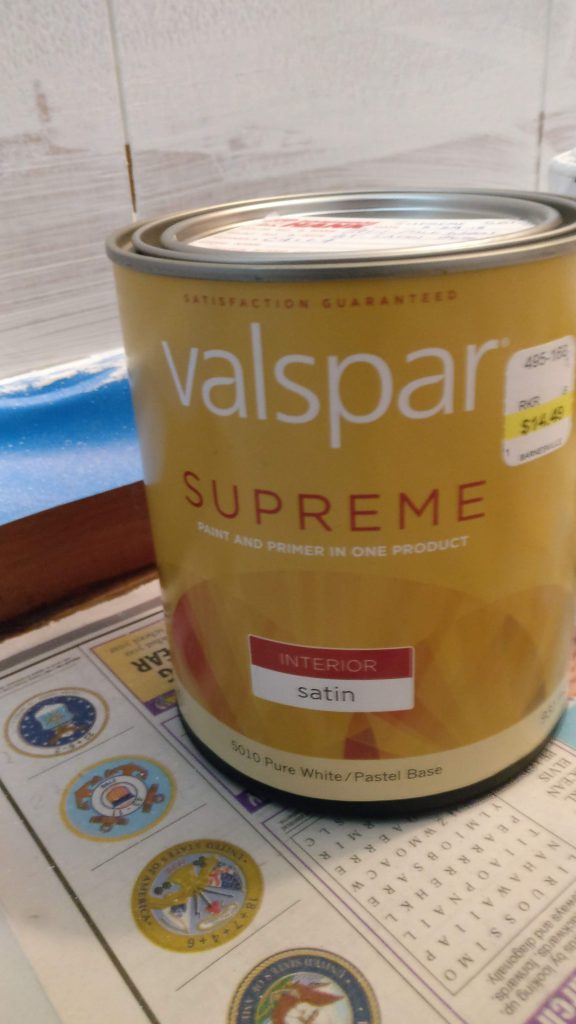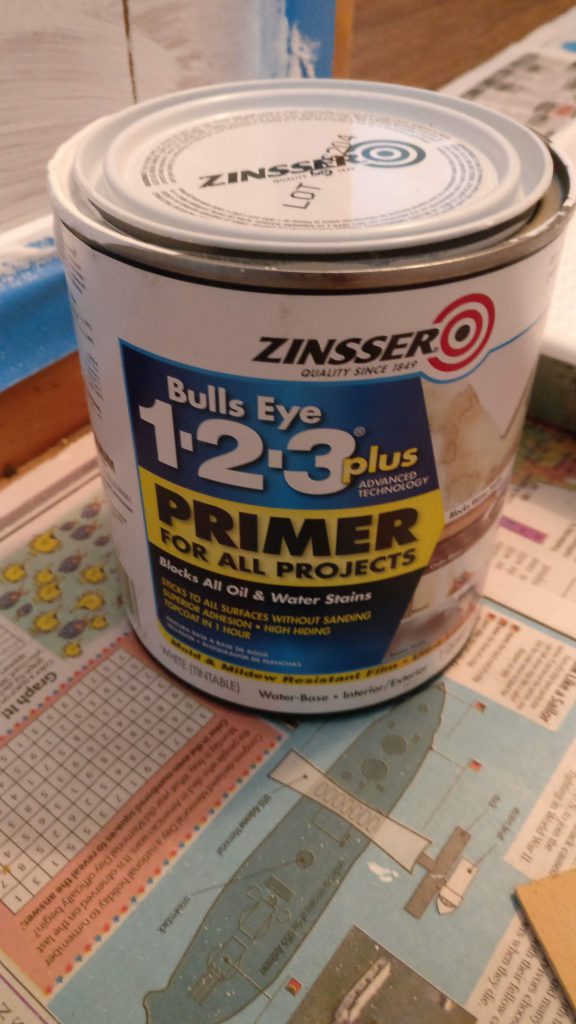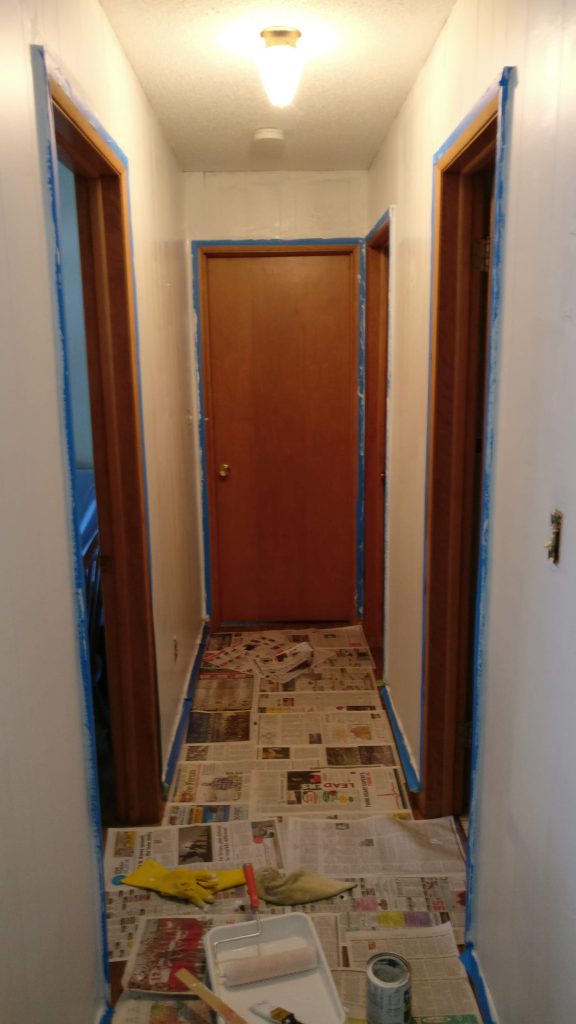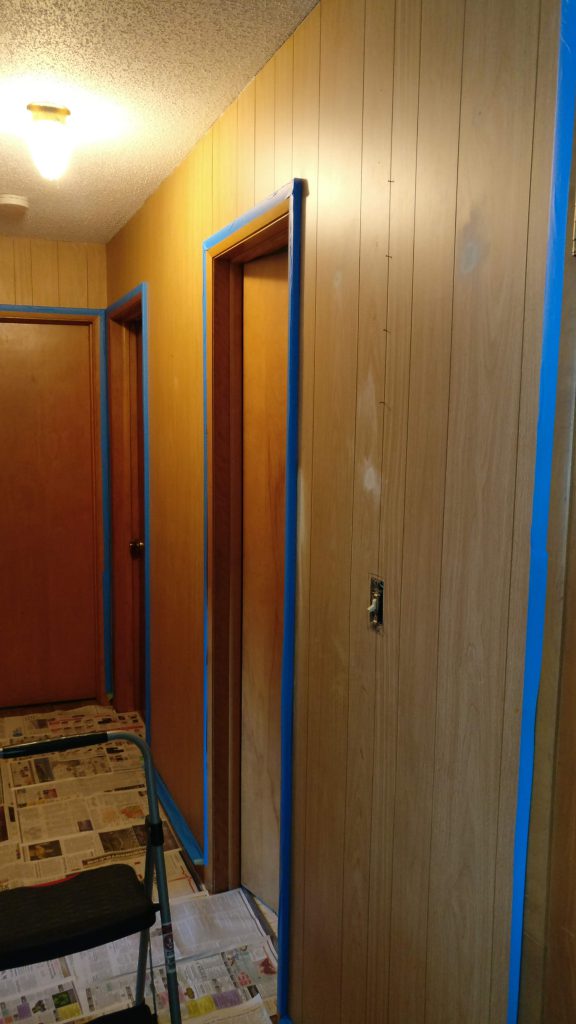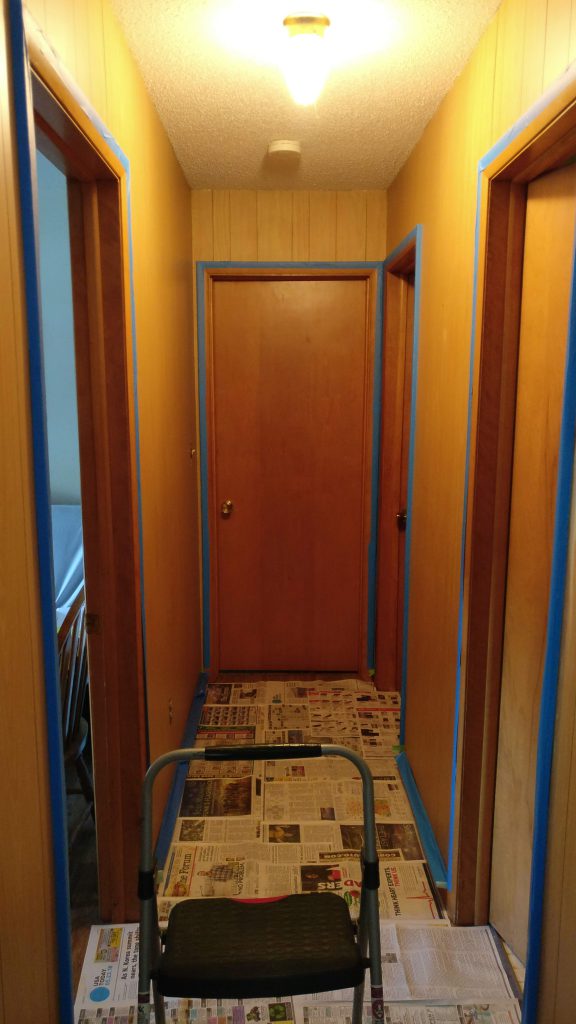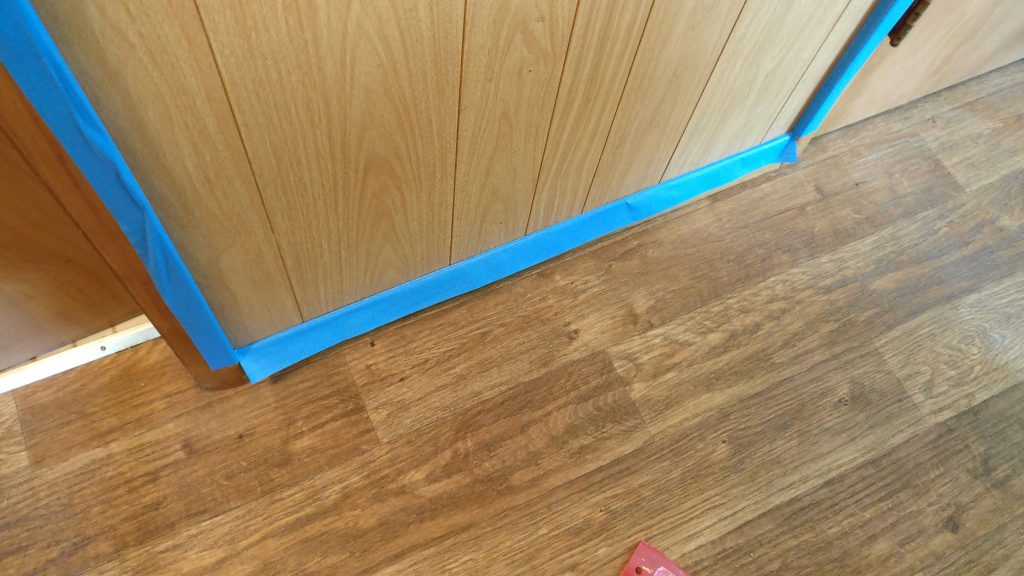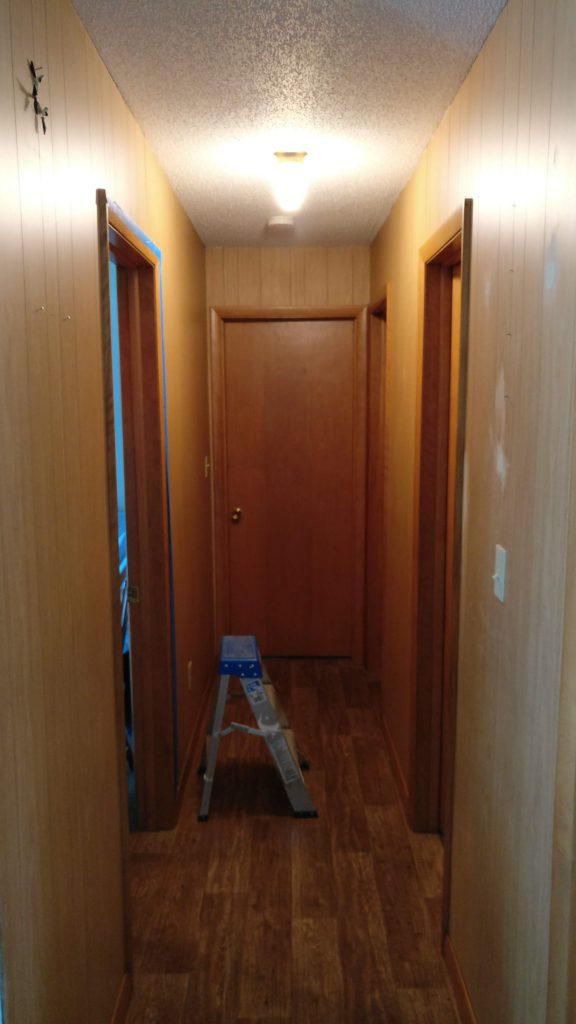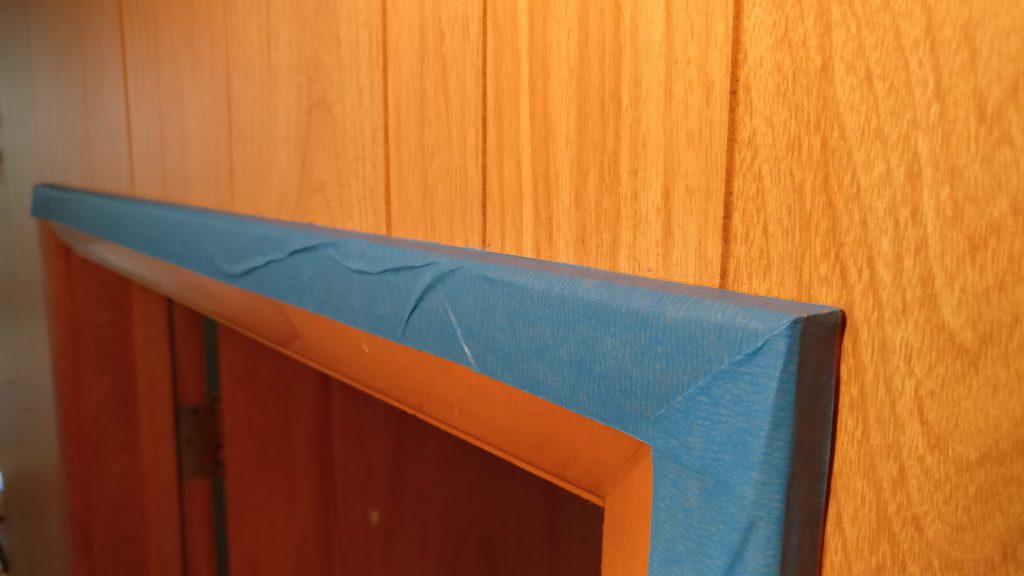The hallway wall had wood paneling on it. The dark wood made the hallway look smaller and dark. It was smooth paneling with grooves running along them. My friend wanted it painted into a white or off-white color to brighten up the hallway.
I started by washing the walls. I mixed some multi-surface cleaner with water, which I soaked in a hand towel to wipe down all of the paneling. I also wiped all the frames and skirting along the wall. This was so that when I put on masking tape that they would fit tightly and no paint would drip through the masking tape.
After the walls were thoroughly washed and dried, I started applying the masking tape. The tape on the skirting of the floor was left up so that if the paint dripped, it wouldn’t drip down the skirting and the newspaper covering the floor would soak it up.
Once the masking tape was put on the door frames and skirting, I placed newspapers to cover the entire floor of the hallway to protect it from any paint marks. I then removed all the outlet and switch wall plates.
Bare wood is among the more difficult substrates for a paint topcoat to adhere to. In the past, there was no substitute for a good slow-drying oil-based primer on bare wood. It took a long time to dry, allowing plenty of time for it to soak into the wood, and it sticks better than any other type of primer to wood.
Even though old-fashioned oil primer is still the best for this, nobody likes to wait 24 hours for a primer to dry before they can topcoat it. So the paint manufacturers developed new, faster-drying technology in both oil and latex-based products that dry quickly yet still aid in the proper adhesion of your paint topcoat.
The primer I used was Zinsser advanced primer. According to the instructions, it was to dry in about one hour, and even though some parts of the wall did, others did not. It could have also been because in certain places the primer was applied too thick.
The primer was painted using a Nap length 3/16″ and 1/4″ soft roller, best used for untextured plaster or drywall, metal, or smooth wood such as cabinets, doors, or trim.
After about an hour to 45 minutes of drying time, I started painting the satin color paint on top of the primer. To my touch, the walls seem dry. The paint I used was a primer and paint mixture, Valspar interior satin. I switched from using a roller to a 7” paint pad. This was my first attempt at using a paint pad. While it was great at getting corners, for most of the walls, it made the paint drip and didn’t evenly distribute the paint. I am sure that I didn’t use it correctly, even after watching a few youtube videos. With this combined with the primer not drying fully, in some parts of the wall, it created several thick blemishes and drip marks. It didn’t look good.
With this, combined with the primer not drying fully, in some parts of the wall, it created several thick smudges and drip marks. It didn’t look good.
I couldn’t do anything till the walls completely dried, the smudge marks combined with the drips didn’t give the wall a finished look. I let the wall dry for two days before coming back to it.
When I did come back to the project the paint had dried. While it didn’t look as bad as it did before, it still didn’t have a soft smooth finish. I started by sanding the rough smudges. After sanding and wiping any dust leftover, I started painting the walls again. This time I used the pad to do corners and edges, and for the rest of the wall, I used a nap length 3/8″ to 1/2 roller, best for medium (semi-smooth) surfaces, Use on lightly textured drywall or wood.
This time the finish was much finer and smoother. Overall the second coat of paint used with the pad and roller gave a better even spread.
Once the second coat of paint was done and dried, I started removing the masking tape. Some of the drips from the first coat were so thick, it was difficult to remove the tape. after removing the tape, using a water soaked towel I wiped the door frames edges and replaced the wall plates.
All in all a fun project. Especially satisfying since I was able to salvage the damage I had done.
